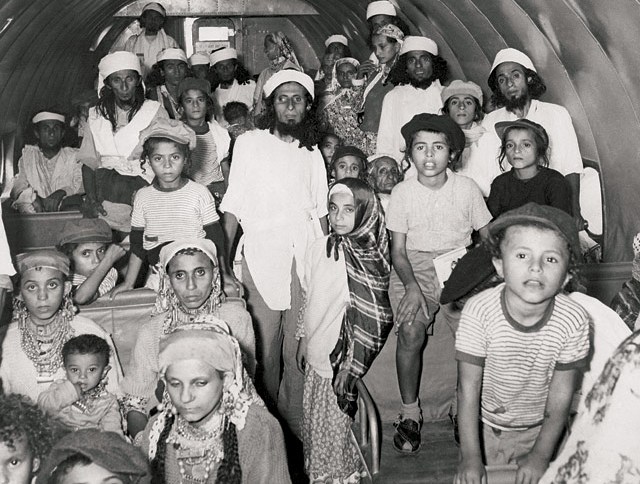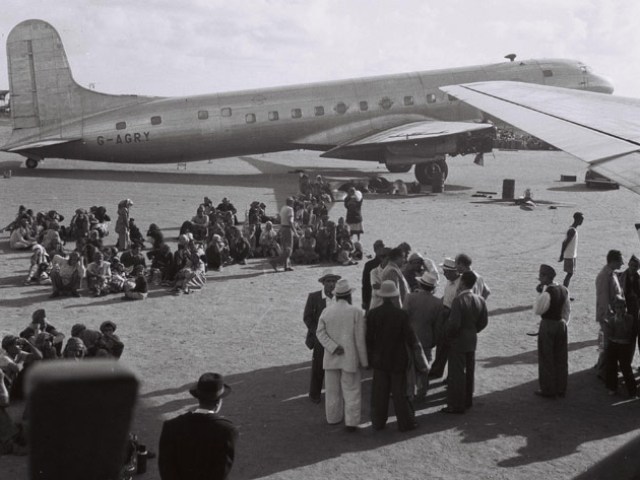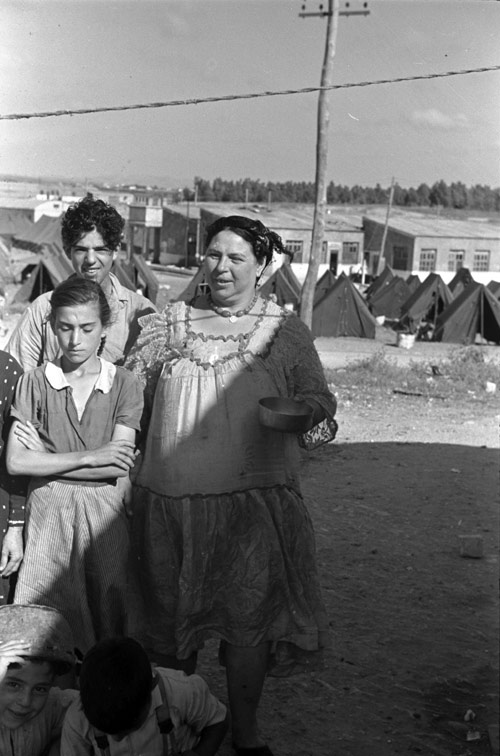People: Jews of Arab Lands
-
-
GovXShortDescription
Significant Jewish communities existed throughout the Middle East, North Africa, Babylon, the Levant, the Arabian Peninsula, Yemen and the Gulf region for more than 2000 years, centuries before the advent of Islam and the Arab conquest.
-
-
GovXContentSection

A Yemenite family walking through the desert to a reception camp set up by the American Joint Distribution Committee near Aden (Copyright: Israel National Photo Archive)
On June 23, 2014 the Knesset adopted a law which designates November 30th as an annual, national day of commemoration for the 850,000 Jewish refugees who were displaced from Arab countries and Iran in the 20th century.
Jews had lived in the Arab lands for thousands of years, and many of their communities preceded the advent of Islam. But in the 20th century, with the rise of Arab nationalism and the conflict in Palestine, the new Arab regimes began a campaign of massive violations of the rights of their Jewish citizens. Arab states expropriated property of their native Jews, and denaturalized, expelled, arrested, tortured and murdered many of them.
Prime Minister Benjamin Netanyahu: "Today, for the first time, we are marking the exit and deportation of hundreds of thousands of Jews from Arab countries and from Iran in the years following the establishment of the State of Israel. It is not for nothing that this day is marked on the day after the 29th of November. The Arab countries, which never accepted the UN declaration on the establishment of a Jewish state, compelled the Jews living in their territories to leave their homes while leaving their assets behind. In several instances the deportations were accompanied by pogroms and violence against Jews. We have acted - and will continue to act - so that they and their claims are not forgotten."
History & Background
The Land of Israel was the birthplace of the Jewish people more than three thousand years ago, and from ancient times, centers of Jewish civilization were established in many parts of the adjacent regions. Significant Jewish communities existed throughout the Middle East, North Africa, Babylon, the Levant, the Arabian Peninsula, Yemen and the Gulf region for more than 2000 years, centuries before the advent of Islam and the Arab conquest.

Jewish woman in Islamic lands, 17th Century print (From the collection of Beit Hatfutsot)
Expulsion from the Arab World
Prior to the UN Partition Plan, state-sanctioned acts of repression and violence precipitated a mass departure of the ancient Jewish communities, often in desperate economic circumstances. In total, over 850,000 Jews were forced to leave the Arab countries.
Prior to the UN Partition Plan, which called for the creation of a Jewish state alongside an Arab state in Mandate Palestine, the Political Committee of the Arab League drafted a law governing the legal status of Jewish residents. It provided that the bank accounts of Jews from Arab League countries were to be frozen and used to finance resistance to 'Zionist ambitions in Palestine'; Jews believed to be active Zionists would be interned as political prisoners and their assets confiscated.
These and other state-sanctioned acts of repression and violence precipitated a mass departure of the ancient Jewish communities, often in desperate economic circumstances. In total, over 850,000 Jews were forced to leave the Arab countries, in a process of expulsion and exodus which continued through the 1970's.

Operation "Magic Carpet"- Jews from Yemen in an airplane on their way to Israel (Copyright: Beit Hatfutsot)

Yemenite Jews awaiting airlift to Israel, Aden, 1949 (Copyright: Israel National Photo Archive)
Integration into Israel
On May 14, 1948 the State of Israel was proclaimed. Despite attack from six Arab armies dedicated to its extermination, waves of mass immigration brought hundreds of thousands of Jews to Israel's shores, Holocaust survivors form Europe and nearly the entire Jewish communities of Libya, Yemen and Iraq.
The fledgling state, following a protracted war of independence, was in hard economic straits, and struggled to provide housing and jobs for the new immigrants. Ma'abarot camps of tin shacks and tents gave temporary shelter; employment was created and the Hebrew language taught; the educational system was expanded to meet the needs of tens of thousands of children from varied backgrounds. Additional mass immigration took place in the late 1950s and early 1960s, from the newly independent countries of North Africa, Morocco and Tunisia.
The human capital - the expertise, talent and fortitude - of the Jews from Arab lands, has contributed immeasurably to Israel's success, despite decades of conflict in a violent region.

Immigrant from Morocco with her children in a refugee tent camp in Israel, 1949
(From the collection of the Israel National Photo Archive)
-
-
-
-
-
-
-
-
-
-
-
-
-
-
-
-
-
-
-